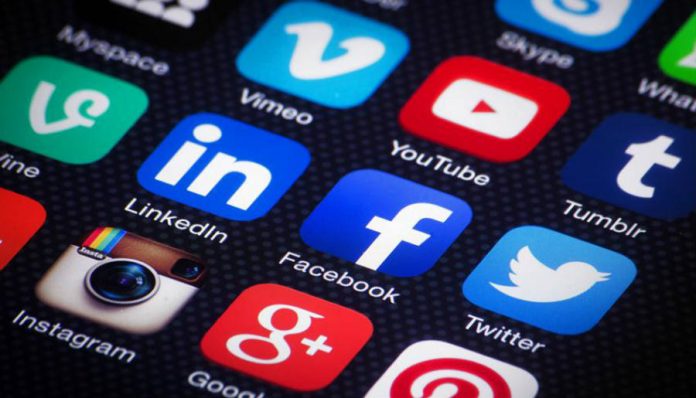
We are almost halfway through the year now, and things have been moving faster than ever in social media. 2017 has been one of the most dynamic years in the industry in recent memory, recording more user growth, more cool features, and more integration with new technologies.
Giants like Facebook, Instagram, Twitter, and Snapchat have all reported booming business during the first quarter of the year. Save for a few drawbacks and missed goal expectations, the consensus seems to be that there is still money to be made in the field.
Social media continues to be one of the primary communications windows shared by multiple generations. Here is how both users and developers have been shaping the industry this year, and how these trends might evolve over the course of the next couple of months.
1. Refocus on live and original content
Industry leaders have been far from resting on their laurels these last few years, quite the opposite. Not only have they been constantly improving their platforms, but also learning about what kind of content users prefer. The answer to that question seems to be video. Live video.
Facebook is leading the charge, of course, with the popular Facebook Live streaming hub. However, some of the services it owns are trailing closely, most notably Instagram and its live broadcast-enabled Stories feature.
Others, like Twitter and Snapchat, are betting on original shows and content a la YouTube Red, which could also go live on occasion. The microblogging site has the edge here, partnering up with sportscasters and event producers to stream shows and games live on Twitter.
2. Stronger content crackdown and regulation
With great power (or user reach?) comes great responsibility, which is why these emerging platforms have been nothing short of controversy. Twitter is more of a seasoned veteran on the live crisis management field, but Facebook is facing a new challenge with its live broadcast service.
Facebook Live has been particularly prone to hosting suicides, murders, and criminal activities, which is why the social giant is doubling down on content policing with 3,000 new content reviewers and drifting away from automated procedures.
Add to this the steady rise of the fake news phenomenon and the increasing spread of malware and other online threats and you have the perfect recipe for disaster. Tech giants like Microsoft, Google, and Amazon have committed to help with the cause, launching initiatives to help clean up the internet.
3. Productivity and sales are a new priority
There is another reason behind the insistence on cyber security and a neat online presence, and that is that these two things are essential to doing good business.
Business is where it has always been at, including social media, but the thing is that companies just need the right way to integrate it without being too aggressive. The traditional way of doing this is launching separate platforms pitched as corporate solutions, things like Workplace by Facebook and Slack Enterprise Grid.
These same firms, however, are implementing friendlier and more functional tools to their platforms in the form of chatbots to let people conduct business within their messaging services. These features include making payments and transactions between users with just a couple of clicks and keyboard taps.
4. Young users need social messaging
Speaking of messaging in social media, count that as a trend that won’t die down anytime soon. Studies have shown that a significant percentage of millennial users prefer and rely on these services to communicate, so it is a must-have in your platform if you want to attract or keep that market segment.
Take a look at Instagram’s recently updated Direct Messaging tab. The chat tab was redesigned to centralize and simplify all the possible ways to engage and maintain a conversation with others, in hopes that the platform serves not just to share photos but also to talk and hang out.
Instant messaging services like WhatsApp, Telegram, and Facebook Messenger, have more users than proper social media sites. To keep it this way, developers make sure of maintaining a stable platform and keeping it interesting with the addition of new features every once in a while.
5. Human-driven social campaigns are hip
Another thing that most people enjoy but millennials love with a passion is social campaigns led by actual people. People like them. Users don’t want to read posts from a sentient suit and tie. Instead, they want to have meaningful interactions with others.
Take for example Wendy’s new Twitter persona. The campaign manager and the people who run that account have been hailed as social media geniuses, simply because they know how to engage people with memes, jokes, compliments, and conversations, but also always promoting their burgers in the process.
More companies have since tried to borrow a page from the fast-food chain’s strategy book, which goes to show that knowing how to work the analytics and projections is not enough sometimes. You also have to know people.
6. The dawn of mixed reality
Social media giants want to know people better, and they also want to come up with new ways for people to know each other. This has led some, like Facebook, to heed the call of new technologies and adding them to the mix.
Mark Zuckerberg recently introduced Facebook Spaces, a new social hub to hang out and interact with your friends in virtual reality. It is still in beta, but it gives us a glimpse of the future of social interactions.
This same idea is what drove the CEO to tease the introduction of augmented reality filters to Facebook and Instagram, allowing people to create their own masks, backgrounds, and novelty items. This same feature has been hinted at over at Snap.
7. Ads, ads everywhere
At its core, social media is still an industry, and like all industries, they need to make money. Advertising is the profit-making method most hated by users, but it has also proved to be the most reliable and effective to developers and investors.
Monetization of user experiences and engagements is set to thrive in 2017, with a wider array of simpler online marketing tools being constantly reviewed and rolled out by the likes of usual suspects Facebook, Twitter, and Instagram.
New features like Stories and its several iterations across different platforms mean new spaces for ads, so expect to see companies capitalizing on this new real estate. Original content will also provide juicy opportunities to strike deals and push targeted campaigns.










